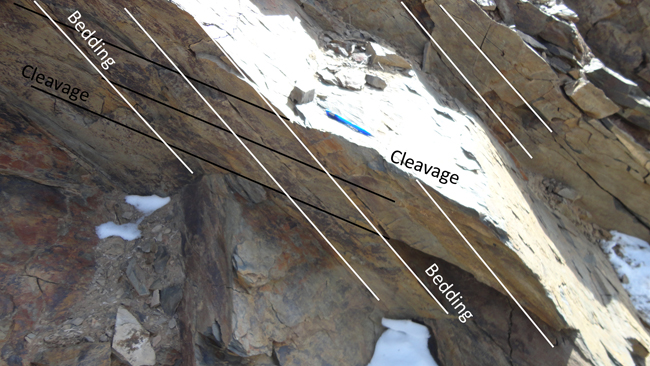After a roadside explanation just an hour and a half earlier on how the relationship between bedding and cleavage can reveal whether bedding is likely right-side-up or up-side-down, my students and I were walking up the road to the Ancient Bristlecone Pine Forest in the White Mountains of California, and I saw this outcrop that illustrated the concept perfectly:

The blue thing is a pen, to provide a sense of scale. Here it is annotated:

Both bedding and cleavage are dipping to the west, but bedding’s dip is steeper than the cleavage’s dip. These beds are likely up-side-down. Here’s the photo in context:

I think that’s one of the most satisfying aspects of teaching: Seeing an outcrop, talking about what it shows, and then expanding on it to say “but it could be different, and the implications would be different,” and then, a short time later, seeing the ‘different’ outcrops, and seeing the students successfully make the ‘different’ interpretation. We then checked our interpretation for searching around for geopetal structures, and sure enough, we found both cross-bedding and graded bedding that “younged” to the east, indicating the beds had been tectonically inverted. Sweet! I couldn’t have planned it any better – but it hadn’t been planned at all!
We hiked onward and upward with a sense of serendipitous satisfaction.


0 thoughts on “Overturned bedding in Poleta (?) Formation, White Mountains, California”